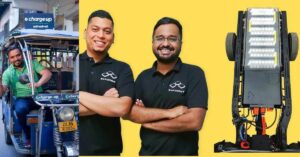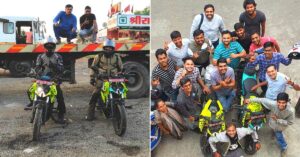Inspired by Farmers in His Family, Engineer Builds India’s 1st Self-Driving Electric Tractor
In 2016, Kaustabh Dhonde founded his startup, AutoNxt Automation, a Mumbai-based electric mobility startup. Nearly six years later, he's on the cusp of manufacturing India’s first electric autonomous (self-driving) tractor.
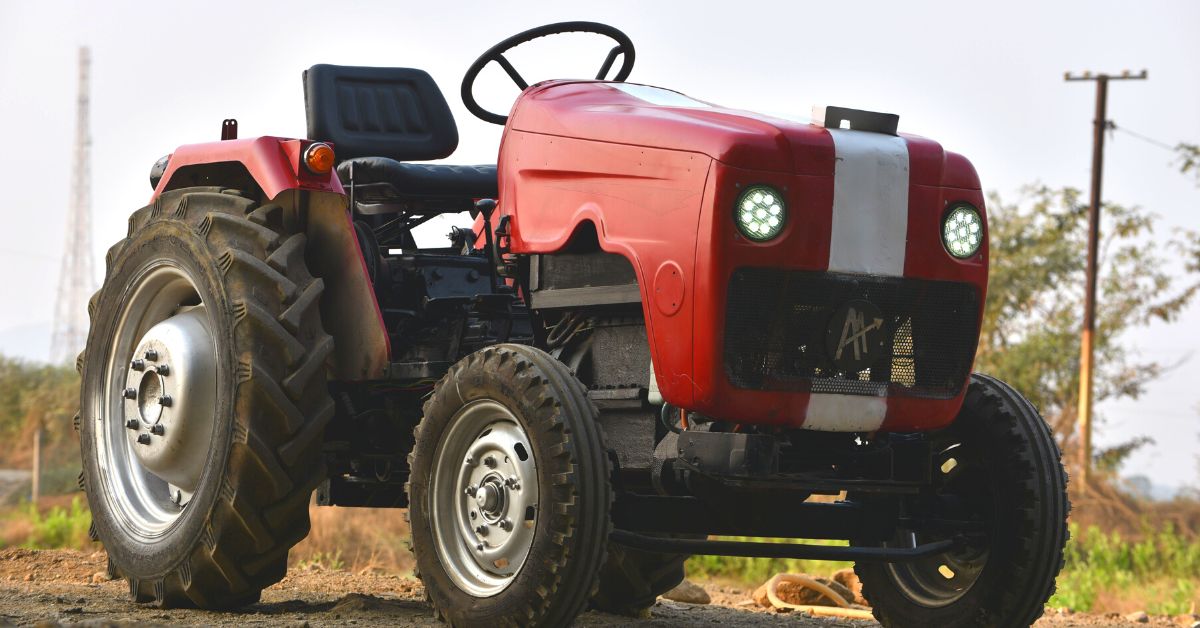
Kaustubh Dhonde remembers visiting his grandparents often in rural Maharashtra as a young child. His grandparents, who were both farmers, resided in a village located in Wai taluka of Satara district, Maharashtra, just below the popular Mahabaleshwar hill station.
“I’ve seen farming from very close quarters during my childhood days when ploughs were attached to oxen for loosening or turning the soil before sowing seeds or planting. Growing up, I witnessed my grandparents and other relatives transition from using oxen to tractors to plough and till the field,” recalls Kaustubh, in a conversation with The Better India.
When he got admission into an engineering college in Mumbai University, however, a few of his relatives sold their tractors that were barely a year or two old. It’s not as if these tractors were of poor quality or broke down. It’s just that owning a tractor burnt a hole through their pockets.
“You have to spend a lot on diesel and maintenance to even get these tractors on the farm. Moreover, finding a suitable driver for this tractor was another point of contention. Following this conversation, I researched the problem further and began discussing these concerns with farmers from different parts of India. This was done to understand whether other farmers in the country shared the same concerns that my relatives did in my village,” says Kaustubh.
What he discovered was that operational expenses are very high. Another issue was that driving a tractor in India is akin to driving a car without shock absorbers on a very bad road.
“Anyone who drives a tractor continuously for several hours can only sustain this activity for a maximum of five years before spinal injuries start to take shape. Moreover, as a driver, you have to regularly turn back and check the implement, whether it’s going down properly or something is stuck. As a result, people of our generation are no longer interested in driving a tractor full-time or working in the field given the availability of less physically-taxing jobs. This makes it very difficult to find skilled labour to drive these conventional tractors,” he recalls.
To address the high costs of driving and maintaining these conventional diesel tractors (high operational expense) and get rid of the dependency on hiring drivers, he came up with the idea of developing an autonomous electric tractor and building a startup around it. After all, sharing a deep passion for robotics led him to victory in various national-level robotics competitions.
In 2016, Kaustubh founded his startup, AutoNxt Automation, a Mumbai-based electric mobility startup. Nearly six years later the 27-year-old is on the cusp of manufacturing India’s first electric autonomous tractor.
He says this tractor is set to “make a difference across a diverse segment of applications such as ploughing, tilling, disking and spraying insecticide.” After building the first prototype of this tractor by the end of 2017, what we have today is a product with a fully electric drivetrain backed by an in-house developed mobile app which does live tracking, battery and system status reports.
“This is a tractor that does not require petrol or diesel. Hardly any oil is required except for the brake and transmission. Our tractors offer greater efficiency and lower maintenance and running costs, which positively impacts processes like tilling, ploughing and spraying and carries heavy loads with 1/4 the expense compared to their diesel counterparts. These were the primary reasons why I chose to develop an electric autonomous tractor instead of a conventional electric two-wheeler, three-wheeler or a four-wheeler,” he says.
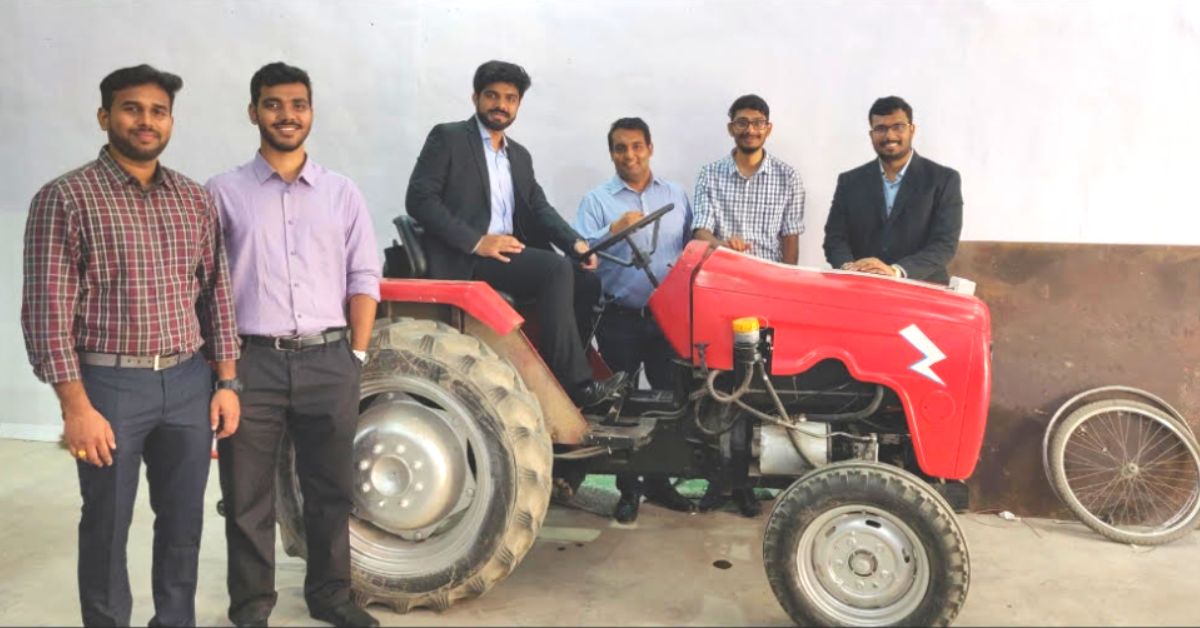
Self-driving tractors
But what does an autonomous (self-driving) tractor entail?
“It does not require any person sitting on the tractor or remotely controlling/operating it inside a farm area. The driverless feature is completely set in a restricted area. It can be a farm, a big industrial complex or a plant. You just have to mark the boundary of the area by driving the tractor along it once, following which the vehicle geo-fences it. Once that geo-fencing is done, you have to take the tractor back to the starting point,” explains Kaustubh.
Through their in-house developed software app, the farmer/owner can inform the tractor what crop it’s ploughing on a given day and accordingly it will commence operations. Once the job is done, the tractor will inform the farmer or the owner through the app. The farmer or plant owner can then collect the tractor and park it wherever he wants.
“There is no need to be on the tractor or closely monitor it. Through the app, the tractor will tell you if there are any challenges it can’t deal with like a big boulder, a fallen tree or an electricity pole. Just like a child, the tractor is learning all the time employing artificial intelligence (AI). The owner can tell the tractor what is to be avoided. When it comes to any obstruction like a big boulder, the owner has to instruct the tractor whether it’s small enough to be ignored or pass by it. This is the first time anyone in India has built such a tractor,” he explains.
The mode of communication between the owner and the tractor is through your normal Wi-Fi network. The app updates the farmer on all the information regarding the tractor, which includes everything from battery percentage left, and how much he or she saved by switching to electric. They can also rent out the tractor using the same app.
“We work on GNSS (global navigation satellite system) for locating the tractor’s position alongside GPS, which only gives you a two-metre radius around the tractor and isn’t the most accurate for the owner to get the tractor positioned. But before anything else, the farmer/owner has to train the tractor to familiarise itself with the farm it’s ploughing,” he adds.
Electric variants
AutoNxt employs their customised PMSM (Permanent Magnet Synchronous Motor, an AC synchronous motor) motors built entirely in India. They have also developed their in-house BMS (battery management system) and are going to file co-patents for both the battery and motor in India.
“Of course, we have to import the battery cell, but it’s integrated here with the BMS and the smart system we have developed in-house,” says Kaustubh.
Meanwhile, they have three autonomous variants of the autonomous electric tractor:
1) For the 25 HP (horsepower) variant, they use a 15 KW motor and 15 KWHr battery with a runtime of 5 hours on the farm (7 hours on the road) on a single charge. It can carry loads up to 750 kg. This is ideal for garden, backyard, horticulture and small haulage activities.
2) The 35 HP tractor variant employs a 25 KW motor, 25 KWHr battery, has a run time of 6 hours on the farm (10 hours on the road) on a single charge and can carry loads up to 1,400 kg. It’s ideal for heavy farming jobs and medium-sized haulage activities.
3) Finally, the 45 HP variant, which runs on a 32 KW motor and 35 KWHr battery, has a run time of 8 hours on the farm (10 hours on the road). It can carry loads up to 1,800 kg at a time.
“These three HP variants cover 90% of the Indian demand for tractors. We have tested it for various conditions, soil types, implements and climatic conditions. Whatever observations we gathered, we have made those adjustments. During the pandemic, we built the technology for the final production-ready tractors. We have some orders for our electric tractors and will begin manufacturing them as soon as we close the Pre-Series A round of funding,” he says.
During the testing process, AutoNxt delivered some of their autonomous electric tractors to farmers in the state. One such farmer is 75-year-old Thate Ji from Pimpalgaon Baswant, a small town 30 km north of Nashik. He recalls, “In my 75 years, I have never seen a tractor work so smoothly and come out of muddy areas while getting the job done. AutoNxt’s tractor is almost free to operate as the electricity is available at subsidised rates on the farm. The tractor also removes the most painful factor of farming which is finding the labour to drive the tractor or drive the tractor ourselves. We are excited to be the first in our town to own this tractor.”
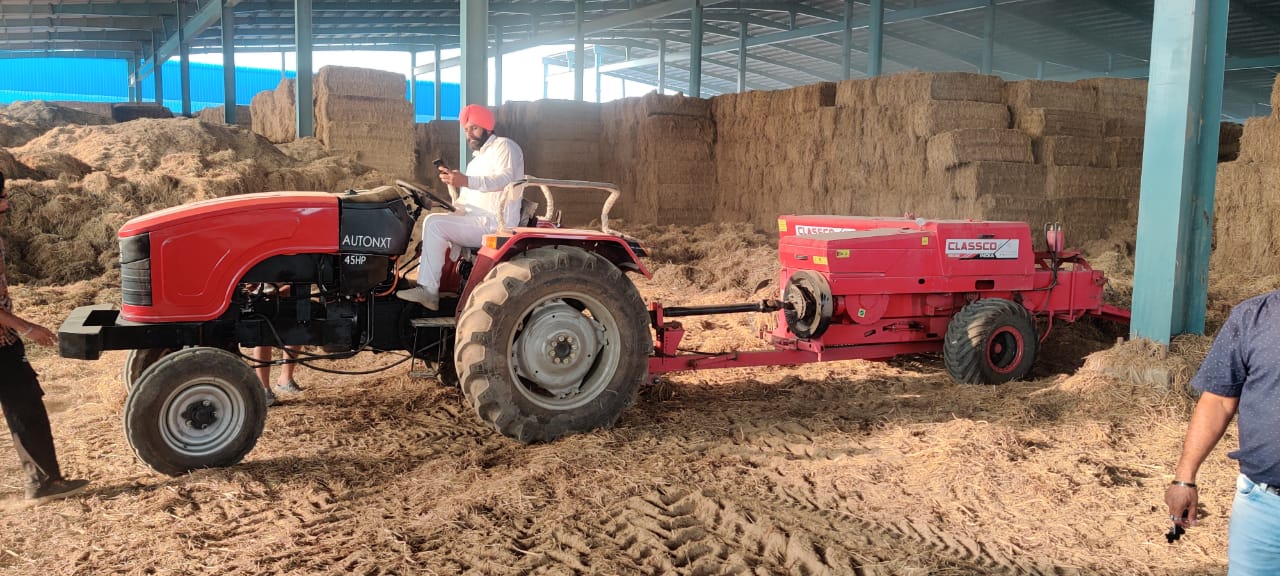
Approach to business
AutoNxt’s initial approach is to sell their electric tractors to B2B clients and not farmers directly yet. “We have given our tractors to farmers for trial purposes and they’ve been using them for a couple of years now. However, we will be initially targeting B2B clients that are using tractors for their in-house applications like biomass fuel generation companies which collect agricultural waste in states like Haryana and Punjab and transport it to a nearby plant,” says Kaustubh. After one year of operations in the B2B space, he claims that they will transition to B2C, targeting individual farmers.
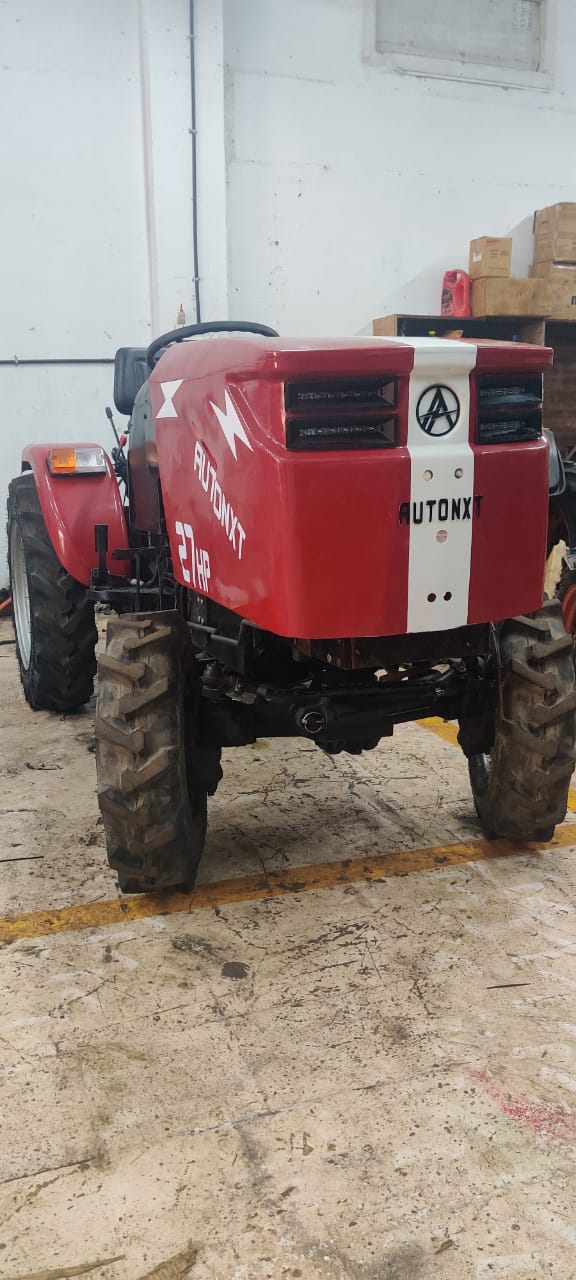
“When we make this transition, we don’t expect the farmers to pay for the battery. Instead, we will adopt the swappable battery model. Farmers will rent these batteries and we will set up a centre in each village where they can swap them. For farmers in the business of renting tractors, we will hopefully see that they will not only be used on their farms but also get the job done on other farms,” he claims.
Thus far, AutoNxt has already raised a seed round of Rs 6.4 crore from some key investors like Chetan Maini, co-founder of SUN Mobility, among “other quality investors”. In their Pre Series-A round of funding, they expect to raise about $3.5 million (Rs 27 crore). They expect to officially close this round of funding by the end of November 2022 and then go for pilot production.
(Visit the AutoNxt Automation website to learn more.)
(Edited by Yoshita Rao)
If you found our stories insightful, informative, or even just enjoyable, we invite you to consider making a voluntary payment to support the work we do at The Better India. Your contribution helps us continue producing quality content that educates, inspires, and drives positive change.
Choose one of the payment options below for your contribution-
By paying for the stories you value, you directly contribute to sustaining our efforts focused on making a difference in the world. Together, let's ensure that impactful stories continue to be told and shared, enriching lives and communities alike.
Thank you for your support. Here are some frequently asked questions you might find helpful to know why you are contributing?


This story made me
-
97
-
121
-
89
-
167







